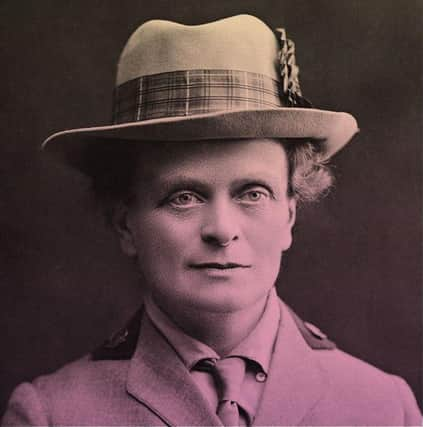Statue gender bias: Edinburgh needs a monument to Elsie Inglis and that should be just the start – Stephen Jardine


They were no doubt important figures in history but where were the buildings named after women?
A few decades on, very little has changed. Edinburgh famously has more statues of animals than women and that remains a source of shame for Scotland’s capital city. Given that women make up half the population, unsurprisingly you don’t have to look far to find suitable candidates for commemoration.
Advertisement
Hide AdAdvertisement
Hide AdFrom Muriel Spark to the Edinburgh Seven, who overcame abuse to become the first matriculated undergraduate female students at any British university, Edinburgh has no shortage of remarkable women who deserve to be honoured just as much as any man.
So in a modern age of equality, does a figure carved in stone really matter?
The simple answer is, you can’t be what you can’t see. The statues of long dead men dominate Edinburgh and while we may have forgotten why many of them are commemorated in the first place, their presence is a marker for what we see as important.
Would women only make up 28 per cent of the workforce in science, technology, engineering and maths if their environment contained public monuments to fellow females who had achieved greatness in these fields? We will never know because instead the achievements honoured are always linked to men.
It’s not hard to see how it happened. Remember, Edinburgh’s first female Lord Provost Eleanor McLaughlin was only elected in 1988. Over 300 men held the position before it was decided the city could cope with a female first citizen, nine years after Margaret Thatcher became Britain’s first woman Prime Minister.
For generations it was men who took the decisions about who should be commemorated with statues in public and surprise, surprise, they always opted for a man. Thankfully times have changed.
This afternoon I’ll be at the City Chambers to support a campaign to have a new statue erected on the Royal Mile to commemorate the incredible life of Edinburgh doctor Elsie Inglis.
At the outset of the First World War, she volunteered her medical skills but was told by the War Office to “go home and sit still”. Thankfully she ignored them and her female-staffed field hospitals saved countless lives on the Western Front and in Serbia. There she is close to a national heroine with her likeness commemorated on postage stamps.
Advertisement
Hide AdAdvertisement
Hide AdIn her home city, the best we can manage is a now defunct maternity hospital. In the week that marks International Women’s Day, it would be fitting to see the campaign for an Elsie Inglis statue reach it’s £50,000 target but that’s just the starting point.
To make up for the centuries of male domination, Edinburgh should create a plinth at The Mound that could be the location for a rotating public commemoration of the great women of Edinburgh, with Creative Scotland and the city’s amazing female artists challenged to utilise the space in new and engaging ways.
To fund it, perhaps we could siphon off some of the £12 million and counting currently being spent on the Trams inquiry, a monument to ineptitude of lawyers, all no doubt men.
A message from the Editor:
Thank you for reading this article. We're more reliant on your support than ever as the shift in consumer habits brought about by coronavirus impacts our advertisers.
If you haven't already, please consider supporting our trusted, fact-checked journalism by taking out a digital subscription.
Comments
Want to join the conversation? Please or to comment on this article.
